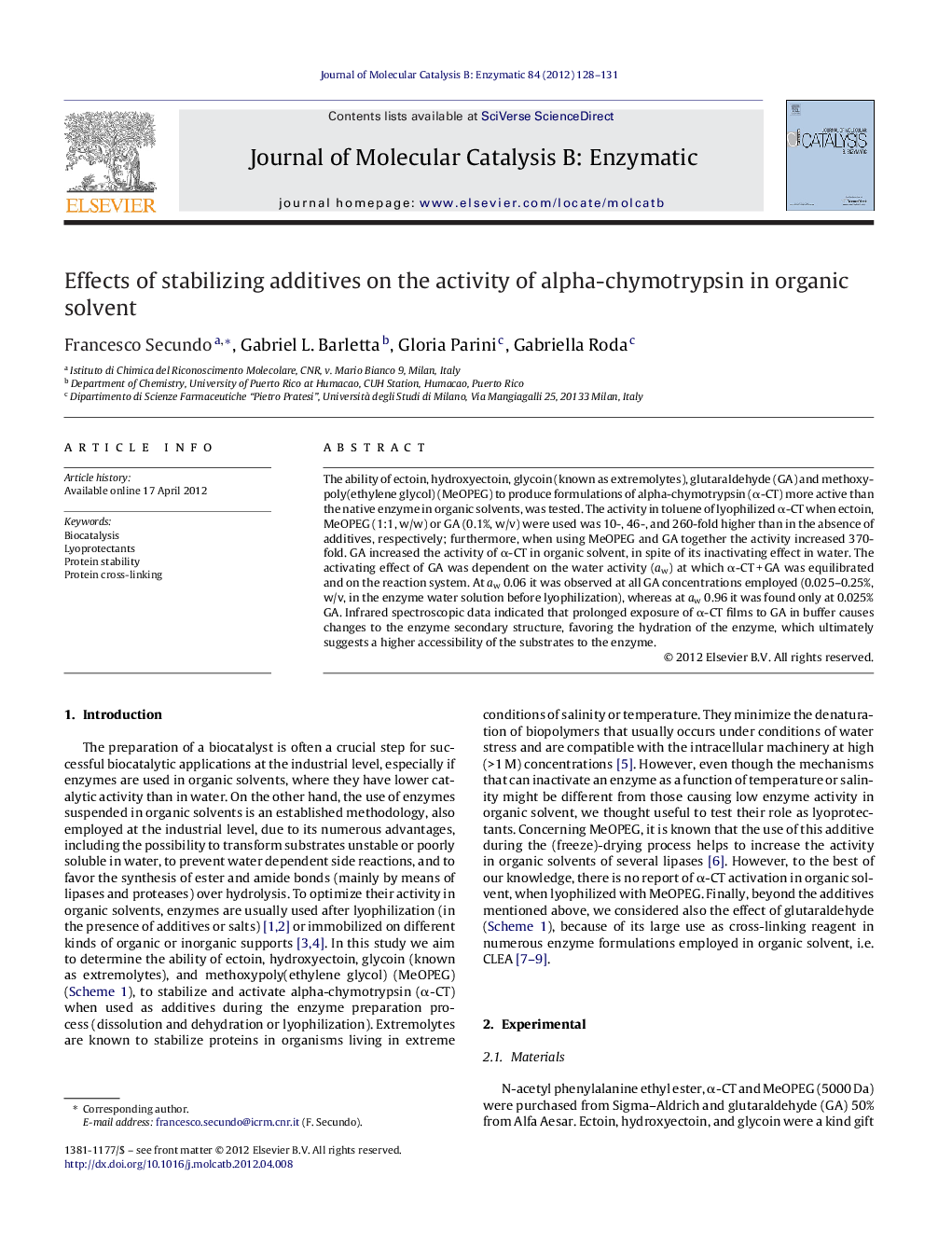| Article ID | Journal | Published Year | Pages | File Type |
|---|---|---|---|---|
| 69899 | Journal of Molecular Catalysis B: Enzymatic | 2012 | 4 Pages |
The ability of ectoin, hydroxyectoin, glycoin (known as extremolytes), glutaraldehyde (GA) and methoxypoly(ethylene glycol) (MeOPEG) to produce formulations of alpha-chymotrypsin (α-CT) more active than the native enzyme in organic solvents, was tested. The activity in toluene of lyophilized α-CT when ectoin, MeOPEG (1:1, w/w) or GA (0.1%, w/v) were used was 10-, 46-, and 260-fold higher than in the absence of additives, respectively; furthermore, when using MeOPEG and GA together the activity increased 370-fold. GA increased the activity of α-CT in organic solvent, in spite of its inactivating effect in water. The activating effect of GA was dependent on the water activity (aw) at which α-CT + GA was equilibrated and on the reaction system. At aw 0.06 it was observed at all GA concentrations employed (0.025–0.25%, w/v, in the enzyme water solution before lyophilization), whereas at aw 0.96 it was found only at 0.025% GA. Infrared spectroscopic data indicated that prolonged exposure of α-CT films to GA in buffer causes changes to the enzyme secondary structure, favoring the hydration of the enzyme, which ultimately suggests a higher accessibility of the substrates to the enzyme.
Graphical abstractFigure optionsDownload full-size imageDownload as PowerPoint slideHighlights► Transesterification activity in toluene of α-chymotrypsin lyophilized with additives. ► Extremolytes and methoxypoly(ethylene glycol) were used as lyoprotectants. ► α-Chymotrypsin pretreated with glutaraldehyde increased enzyme activity in toluene. ► Methoxypoly(ethylene glycol) plus glutaraldehyde increased enzyme activity 370-fold. ► ATR-FT/IR data show that glutaraldehyde favors α-chymotrypsin hydration.
